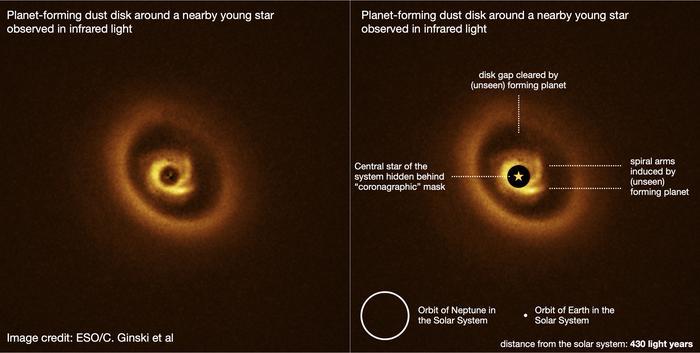Astronomers have discovered the site of a newly forming exoplanet, probably with several times the mass of Jupiter.
-
Astronomers have discovered the site of a newly forming exoplanet, probably with several times the mass of Jupiter. The image was captured by ESO's Very Large Telescope, seeing the young star system 2MASS 1612 in infrared light. The disk extends about 130 astronomical units from the star, but you can see a bright ring followed by a gap at about 50 AU. It's believed there's a new planet forming in that gap, pulling in material from the disk of gas and dust around it.
Researchers discover likely site of new planet in formation
An international team of astronomers led by University of Galway, has discovered the likely site of a new planet in formation, most likely a gas giant planet up to a few times the mass of Jupiter. Using the European Southern Observatory's Very Large Telescope (ESO’s VLT) in Chile, the researchers captured spectacular images around a distant young star for the first time in the form of scattered near-infrared light that revealed an exceptionally structured disk.
EurekAlert! (www.eurekalert.org)
